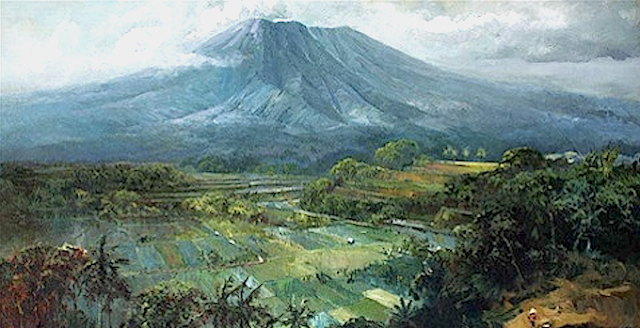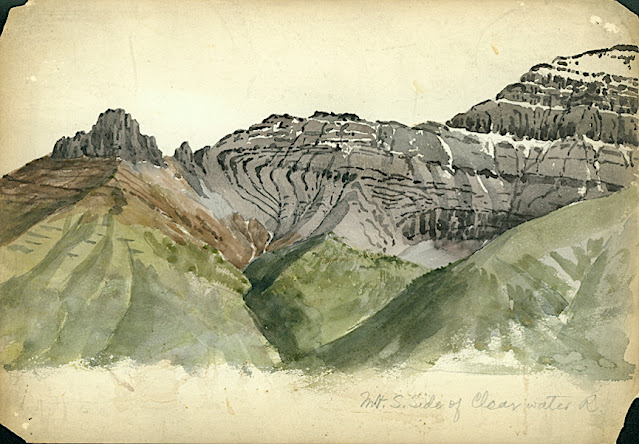In Summer in Hindu Kush - Noshaq peak in the distance, c.1922., autochrome Lumière process
About the "Autochrome Lumière" Photos
The autochrome is a photographic reproduction of process colors patented December 17, 1903 by Auguste and Louis Lumière french brothers. This is the first industrial technique of photography colors, it produces positive images on glass plates. It was used between 1907 and 1932 approximately an particularly in many pictures of the World War I. A important number of photographs of mountains and landscapes around the world was made with this technique, particularly in the for the Project "The archives of the planet" by Albert Kahn.
Noshaq Main (7,492m), Noshaq East (7,480m), Noshaq Central (7,400m), Noshaq West (7,250 m)
From Pakistan:
Only Noshaq West (7,250 m) stands on the Pak-Afghan border, being
natural water shed. Noshaq Main (7,492m) and the rest of the peaks of
this massif lie well within Pakistan territory and easily accessible
from Chitral-Pakistan which is 64 km away. Chital airport is linked with
Islamabad, the capital of Pakistan, with a daily flight of one hour
duration and Peshawar, the capital of Khyber Pukhtoonkhwa province of
Pakistan with a daily flight of 40 minutes duration.
Noshaq Main (7,492m) was first ascent by Japanese expedition in 1960.
The expedition was led by Professor Sakato. Other members of the
expedition were Goro Iwatsabo and Toshiaki Sakai. The route was followed
from the South East Ridge of the peak, Nowadays; the normal route is by
southeast face through Terich valley of Chitral-Pakistan. The second
highest peak in this range is Noshaq East (7,480m) climbed in 1963 by
Dr. Gerald Gruber and Rudolf Pischenger from Austria. The 3rd highest
peak of the massif Noshaq Central (7,400m) and the 4th peak is Noshaq
West (7,250m). These peaks were also climbed by the same Austrian
expedition of 1963. The first winter ascent was in 1973 by Tadeusz
Piotrowski and Andrzej Zawada, member of a Polish expedition, via the
north face. It was the world’s first winter climb above any 7,000m peak.
From Afghanistan:
The North and the west sides of the mountain are in Afghanistan where as
the South and Eastern sided are in Pakistan. In Afghanistan's Noshaq is
considered it's the highest mountain and is located in the northeastern
corner of the country along the Durand line which marks the border with
Pakistan. It's 28 km away from Qazi Deh village, an expedition of 5
days journey. Qazi Deh is 280 km away from Kabul, the capital of
Afghanistan, a perilous journey. However, the Easiest access to Noshaq
is from Chitral, Pakistan. Nowadays, the normal route on Afghanistan
side is by the West ridge.
The first Afghan ascent of the mountain was in July 2009. Two members of
a team of four Afghans from the Wakhan Corridor made the summit on July
19.
___________________________
2021 - Wandering Vertexes...
by Francis Rousseau

















